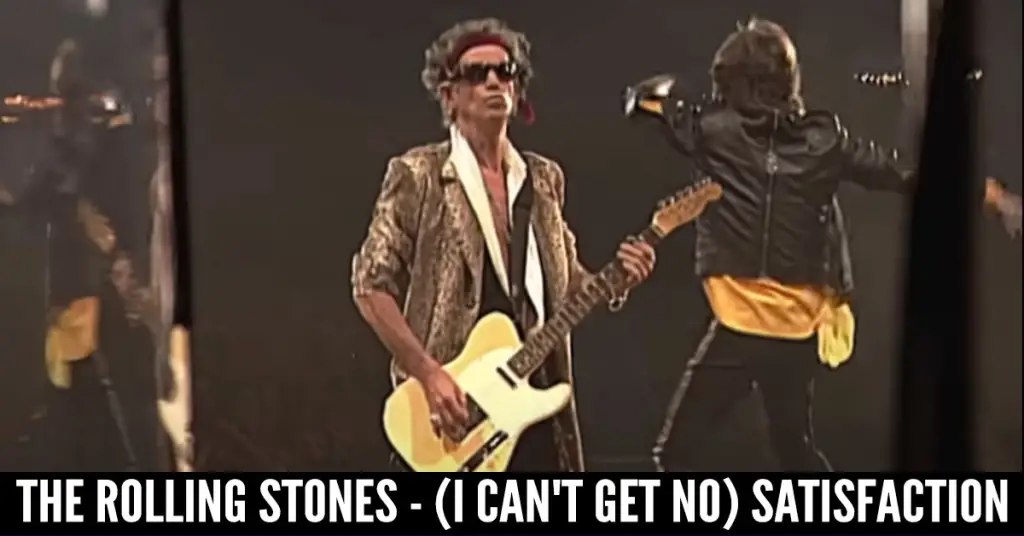When The Rolling Stones released “(I Can’t Get No) Satisfaction” in the summer of 1965, they didn’t just drop a hit single—they dropped a molotov cocktail into the heart of pop culture. Gritty, rebellious, and soaked in sexual frustration and social disgust, it became the ultimate anti-establishment anthem, capturing the voice of a generation that was tired of being sold something it didn’t want.
This wasn’t just a song. It was a revolution in three chords and a fuzz pedal.
The Riff Heard ‘Round the World
It all began in a hotel room. Keith Richards famously woke up in the middle of the night, grabbed his cassette recorder, and laid down the bones of what would become rock’s most iconic guitar riff—that fuzz-drenched, snarl of a lick that kicks the song off and never lets go.
🎸 Da-da-da-da-da… DUN-DUN.
Richards originally intended the riff as a placeholder for a horn section, but producer Andrew Loog Oldham and the band knew better. The Gibson Maestro FZ-1 fuzzbox gave it a gritty, distorted edge that sounded unlike anything on the radio in 1965. That riff became the definition of rock ’n’ roll attitude.
Jagger’s Snarl and Discontent
Then came Mick Jagger—sultry, sneering, and fed up. His lyrics captured the frustration of modern consumerism, the pressure to conform, and a simmering sexual tension that practically dripped off the vinyl.
“When I’m watchin’ my TV / And a man comes on and tells me / How white my shirts can be…”
Jagger didn’t sing “Satisfaction”—he spat it. The song was a rejection of plastic promises and a swipe at a world trying to define what happiness should be. It was punk rock ten years before punk existed.
Banned, Blasted, and Beloved
“Satisfaction” was deemed too suggestive by many radio stations upon release—especially in the UK, where BBC programmers balked at its sexual overtones. But that only added to its mystique. In the U.S., it exploded, becoming the band’s first No. 1 hit and staying atop the Billboard Hot 100 for four weeks.
The song catapulted The Rolling Stones from scrappy blues disciples to world-dominating icons, defining them as dangerous, sexy, and undeniably cool.
A Cultural Earthquake
“Satisfaction” wasn’t just a chart-topper—it was a generational battle cry. It encapsulated the restlessness of the Baby Boomer youth, disillusioned with the status quo and tired of buttoned-up pop songs.

In just over three minutes, The Rolling Stones captured a cultural shift. They weren’t asking for revolution—they were demanding it. And they did it with a riff, a smirk, and a whole lot of swagger.
Still Not Satisfied—After All These Years
Over half a century later, “(I Can’t Get No) Satisfaction” remains one of the most influential songs in rock history. It’s been covered by artists as diverse as Otis Redding, Britney Spears, and Devo—each bringing a new layer to its immortal dissatisfaction.
The original, though, still hits hardest. That fuzz-tone riff still sounds rebellious. Jagger’s voice still bristles with attitude. And the frustration it channels? Still alarmingly relevant in today’s over-marketed, over-stimulated, never-enough culture.
It ranked #2 on Rolling Stone magazine’s list of the “500 Greatest Songs of All Time”, and it continues to be a live staple at Stones shows—where it still shakes stadiums with its timeless rage.
Final Thoughts
“(I Can’t Get No) Satisfaction” is more than a hit. It’s a manifesto, a mission statement, and a middle finger raised to every hollow promise the world makes.
It’s the song that turned The Rolling Stones from a great band into the greatest rock band in the world.
So turn it up, sneer with it, and shout along—because sometimes, screaming about what you can’t get is the most liberating feeling in the world.


Facebook Comments